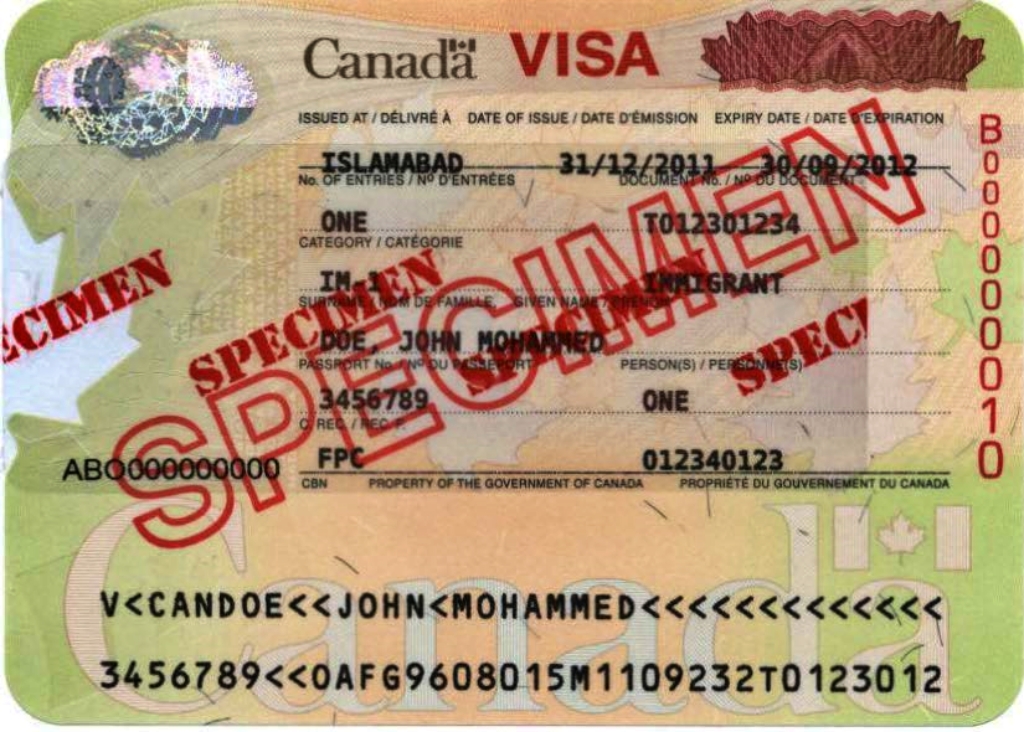

Canada Visa Category Codes on Your Passport Counterfoil
There are many elements on your visa counterfoil. Most of them are easy to understand. However, the category codes on Canadian visa counterfoils could be confusing.
What is counterfoil on passport?
It is in the form of a sticker (counterfoil) placed on a page in your passport. It is sometimes referred to as an entry visa or a visitor visa. The document gives you the ability to travel to a Canadian port of entry and to be examined for entry to Canada.
How to get counterfoil visa Canada?
When your application is approved, IRCC will send you a decision letter with instructions on how to get your visa. Normally, you need to submit your passport to get a physical visitor visa, sometimes referred to as a counterfoil, affixed within to allow you to travel to Canada.
Can Canada visa be rejected after approval?
If the visa officer doubts your letter of acceptance is genuine or that you truly met all program requirements, they may refuse your application. To avoid an issue like this in your reapplication, review the documentation and make sure all documents are clear and easy to understand.
When do I receive a visa counterfoil?
Unless you are from a visa-exempt country, you could receive a counterfoil for any of the following reasons:
There could be other circumstances where you need a visa counterfoil. However, if you do not hold a valid passport, the officer may issue you a Single Journey Travel Document.
The following table shows the existing category codes and their meaning.
| Category Code | Description |
| B-1 | Business Visitor |
| C-1 | Courtesy |
| D-1 | Diplomat |
| F-1 | Facilitation Visa |
| IM-1 | Immigrant (single-entry visa for PR) |
| 0-1 | Official |
| PA-1 | Permit Holder |
| PAX-1 | National Interest TRP |
| PC-1 | Permit Holder with Valid TRP |
| PG-1 | Parents or Grandparents Super Visa |
| R-1 | Passed-Residency Obligation |
| RA-1 | Presence at Appeal |
| RC-1 | Passed H&C – PR Travel Document |
| RX-1 | Attending a PR hearing while you were present in Canada in the past 365 days. |
| S-1 | A student with Study Permit |
| SW-1 | An international student with Study & Work Permit |
| SX-1 | A student exempt from the requirement to obtain a Study Permit |
| V-1 | Visitor |
| VH-1 | Visitor in Transit for not more than 48 hours |
| W-1 | A worker with Work Permit |
| WX-1 | A worker exempt from the requirement to obtain a Work Permit |
What is a port of entry (POE) letter?
It’s a letter you may receive from IRCC if you’ve been approved for a
Officially, it’s called the port of entry (POE) letter of introduction. But this letter is sometimes called the
The letter of introduction is not your study or work permit.
You’ll get this letter if you were approved and you
When you arrive in Canada
Tell the officer at the port of entry about your approved application.
If you don’t have a printed copy of your letter of introduction, you can show
What are the requirements for becoming a Canadian citizen? To become a Canadian citizen, you…
Writing a letter of invitation doesn’t mean you’re legally responsible for the visitor once they…
As of January 28, 2025, Immigration, Refugees and Citizenship Canada (IRCC) has updated the health…
The Super Visa is a multiple-entry temporary resident visa (TRV), issued with a validity of…
The Super Visa is a multiple-entry temporary resident visa (TRV), issued with a validity of…
If you applied for a new temporary resident visa, or a study or temporary work…